I feel that I am close to finding the answer for my problem, but somehow I just cannot manage to do it. I have used nls function to fit 3 parameters using a rather complicated function describing fertilization success of eggs (y-axis) in a range of sperm concentrations (x-axis) (Styan's model [1], [2]). Fitting the parameters works fine, but I cannot manage to plot a smoothed extrapolated curve using predict function (see at the end of this post). I guess it is because I have used a value that was not fitted on x-axis. My question is how to plot a smoothed and extrapolated curve based on a model fitted with nls function
using non-fitted parameter on x-axis?
Here is an example:
library(ggplot2)
data.nls <- structure(list(S0 = c(0.23298, 2.32984, 23.2984, 232.98399, 2329.83993,
23298.39926), fert = c(0.111111111111111, 0.386792452830189,
0.158415841584158, 0.898648648648649, 0.616, 0.186440677966102
), speed = c(0.035161615379406, 0.035161615379406, 0.035161615379406,
0.035161615379406, 0.035161615379406, 0.035161615379406), E0 = c(6.86219803476946,
6.86219803476946, 6.86219803476946, 6.86219803476946, 6.86219803476946,
7.05624476582978), tau = c(1800, 1800, 1800, 1800, 1800, 1800
), B0 = c(0.000102758645352932, 0.000102758645352932, 0.000102758645352932,
0.000102758645352932, 0.000102758645352932, 0.000102758645352932
)), .Names = c("S0", "fert", "speed", "E0", "tau", "B0"), row.names = c(NA,
6L), class = "data.frame")
## Model S
modelS <- function(Fe, tb, Be) with (data.nls,{
x <- Fe*(S0/E0)*(1-exp(-B0*E0*tau))
b <- Fe*(S0/E0)*(1-exp(-B0*E0*tb))
x*exp(-x)+Be*(1-exp(-x)-(x*exp(-x)))*exp(-b)})
## Define starting values
start <- list(Fe = 0.2, tb = 0.1, Be = 0.1)
## Fit the model using nls
modelS.fitted <- nls(formula = fert ~ modelS(Fe, tb, Be), data = data.nls, start = start,
control=nls.control(warnOnly=TRUE,minFactor=1e-5),trace = T, lower = c(0,0,0),
upper = c(1, Inf, 1), algorithm = "port")
## Combine model parameters
model.data <- cbind(data.nls, data.frame(pred = predict(modelS.fitted)))
## Plot
ggplot(model.data) +
geom_point(aes(x = S0, y = fert), size = 2) +
geom_line(aes(x = S0, y = pred), lwd = 1.3) +
scale_x_log10()

I have tried following joran's example here, but it has no effect, maybe because I did not fit S0:
r <- range(model.data$S0)
S0.ext <- seq(r[1],r[2],length.out = 200)
predict(modelS.fitted, newdata = list(S0 = S0.ext))
# [1] 0.002871585 0.028289057 0.244399948 0.806316161 0.705116868 0.147974213

